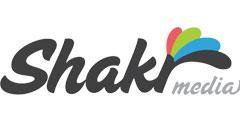What's New This Quarter
In Silicon Valley, everyone wants to be associated with the Next Big Thing. “In the Bay Area, I’m finding that SaaS and e-commerce based companies seem to be defining the current hiring status quo for other local companies and industries,” said Alyssa Seidman, recruiting director for recruiting firm Randstad Technologies. “They tend to have the most progressive environments and the ability to attract and afford the best talent.” That means companies in other industries, such as financial services and healthcare, need to get more creative if they want to compete for talent. And some financial-services companies are very much on the hunt for tech pros. Bank of New York Mellon has opened a technology lab in Palo Alto to work on tech projects including Digital Pulse, the bank’s effort to harness the Big Data it gathers. BNY Mellon hired 20 people by the end of 2014 and will increase recruitment in 2015. To find tech jobs in Silicon Valley, click here. On the tech-company side of things, hiring in the Valley is at a high for some firms. Google never has a problem attracting talent. The search-engine giant continues on a hiring-and-building tear, spending $585 million to buy six office buildings at Pacific Shores Center in Redwood City. It also plans to occupy all of Moffett Place, a six-tower development in Sunnyvale. Google had 55,030 full-time employees at the beginning of the fourth quarter, up almost 19 percent from a year earlier; it gets three million job applications a year and hires around 7,000. With only one in 428 applicants ending up with a job, Google is far choosier than any Ivy League university. Dell is on a similar path, opening up its first Internet of Things Lab, a collaborative facility for hardware and software developers to build, test, and release connected products. Located at the company's Santa Clara office, the lab should help Dell learn more about the industry and help develop standards around it. Meanwhile, three Silicon Valley giants have been undergoing huge transformations in the past few months:- In October, HP announced it will separate into two new publicly traded Fortune 50 companies: one comprising HP’s enterprise technology infrastructure, software and services businesses (called Hewlett-Packard Enterprise), and one that will comprise HP’s personal systems and printing businesses (HP Inc.). The long-rumored announcement came as HP entered the fourth year of its five-year turnaround plan. While the company said it had “inspired its workforce and management teams” and created new companies “positioned to accelerate performance, drive sustained growth, and demonstrate clear industry leadership in key areas,” what was left unsaid was the final impact on headcount.
- eBay is also changing, with plans to eliminate thousands of jobs early this year as it preps to spin off its PayPal unit. The cuts are expected to affect workers in eBay’s core marketplace division. One rumor has eBay has trimming at least 3,000 jobs. The end result could be to make the new standalone eBay a potentially attractive takeover target.
- IBM is taking the divestment route, selling its global commercial semiconductor technology unit for $1.5 billion to Santa Clara-based Globalfoundries Inc. IBM has about 4,000 employees in Silicon Valley, and their futures are uncertain.
Skills in Demand
“Over the past six months, I’ve noticed an increase in demand for individuals that have UI development experience,” Randstad’s Seidman said. “Specifically, candidates that have experience with newer front end technologies like Node.js, Angular.js, and Python are in the highest demand. They’re more efficient and easier-to-scale than older technologies.” “The Bay Area is experiencing intense IT hiring due to continued software platform upgrades, virtualization projects, and mobile initiatives,” added Megan Slabinski, Bay Area district president of IT recruiting firm Robert Half Technology. “We continue to see a war for talent for in-demand roles including front end developers, data analysts, system administrators, and system architects.” According to IT recruiting firm Mondo’s 2014-2015 Salary Guide, the top three skills currently in demand in the Bay Area are Application and Software Development, E-commerce, and Database administration. Sixty-one percent of Bay Area technology executives surveyed by Robert Half Technology said that both database management and desktop support are among the skill sets in greatest demand within their IT departments. Network administration followed in third place. Also in demand: network architects, cloud engineers, MongoDB experts, and Hadoop experts.Salary Trends
According to the 2014-2013 Dice Salary Survey, the average salary for a Silicon Valley-based IT professional is the nation’s highest at $108,603, up 7.2 percent from the previous year and 23.6 percent above the national average of $87,811. According to Mondo, Data Scientists; Oracle, Hadoop, and Neteeza developers; AWS consultants; and MySQL developers are currently seeing the largest salary jumps.Leading Industries
- Information Technology
- Technology Manufacturing
- Software Development
- Construction
- Defense/Aerospace
Local Employment and Research Resources
Upload Your ResumeEmployers want candidates like you. Upload your resume. Show them you're awesome.
Related Articles
- Here’s What Some Silicon Valley Interns Make
- On the Jobs Front, Silicon Valley Frothy as Ever
- Why Silicon Valley’s ‘Attitude’ Isn’t Such a Bad Thing



